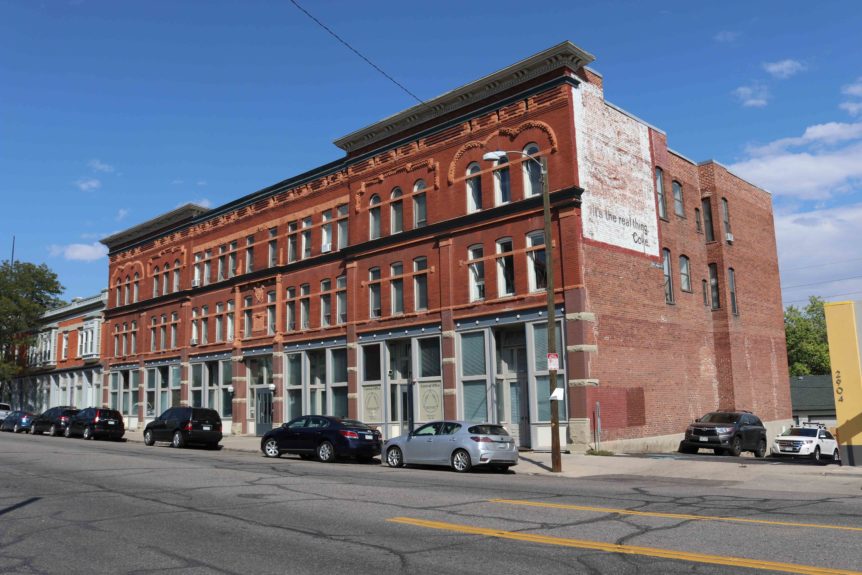The cost of utilities in the US hits the poorest households the hardest. This is especially true for residents that live in multifamily (MF) housing, where many buildings are not updated to meet energy and water efficiency standards.
Low-income households in the US pay approximately three times the amount for utilities than average earning households. As technology progresses–enabling energy and water systems to become decarbonized, digitized, highly efficient, and more diverse–communities will see a multitude of benefits. They will have better air quality, more energy independence, smaller carbon footprints, and lower utility bills, to name a few.
The vital question when it comes to these benefits is how they will be extended to all communities and consumers. What will it take for building retrofits and upgrades to not only increase the owner’s property equity, but also contribute to the social equity of energy use in local communities? The answer to both of these questions, energy equity, is essential to sustainable development and building community capacity.
Scope of the Problem
The demand for affordable housing in the US greatly exceeds the supply. The current affordable housing crisis highlights the need for energy equity.
According to the Urban Institute, nationwide only 28 adequate and affordable units are available for every 100 renter households with incomes at or below 30% of the area median income. The same study went on to assert that zero counties in the US have enough housing for families in extreme poverty.
This isn’t to say that the amount of MF housing is insignificant. The 2012 US Census shows that about 30% of the population lives in MF housing. However, the Census also shows that nearly 60% of MF rental properties were built before 1980, and that more than half of MF affordable housing units available for low-income renters are at least 50 years old.
While efforts to construct more MF affordable housing properties to higher energy and water efficiency standards are praise worthy, unless we rebuild our entire housing stock, the only way to truly benefit low-income communities is to dramatically expand access to deep retrofits and clean energy upgrades for existing MF properties.
Social and Environmental Justice
Another consideration in rehabilitating the US affordable housing sector is that less affluent communities and people of color have historically shouldered disproportionate environmental burdens as a result of energy and water systems (e.g. harms associated with damaging land use, waste storage, and emissions choices).
We’re now in an era in which technology and modernized homes can significantly reduce the risks associated with environmental justice concerns. However, not all consumers have access to new technology, and many don’t have the right information to make smart energy and water choices for their household. In order to ensure the social equity of affordable housing in the 21st century, steps need to be taken to address the lack of both information and financing available to low-income Americans for home energy and water systems.
Societal Benefits of Housing Preservation
Aside from social motives, rehabilitating MF affordable housing will result in significant returns on investment. A study commissioned by the National Resource Defense Council estimates approximately $6.5 billion of net benefit (after accounting for costs of retrofits) is achievable from implementing MF affordable housing retrofits across nine states. This net benefit would stimulate local economies and put money in the pockets of both building owners and residents. Nationally, achieving higher efficiency standards would make MF housing more affordable, sustainable, and profitable.
Comprehensive Building Retrofits
A deep retrofit that brings properties close to net zero energy consumption and provides healthy living conditions can reduce or eliminate utility and health care costs, freeing up funds for families to spend on essential goods such as food, medicine and education.
ICAST has developed an innovative one-stop-shop model to help MF properties tackle deep retrofits in a simple, hassle-free and cost-effective manner. It captures all of the available incentives for MF housing while providing the planning, design, development, financing, and construction management of the project—rolling all services into one contract rather than the customary half a dozen contracts with different service providers.
ICAST even helps MF property owners procure alternative financing for their project through mechanisms such as Energy Performance Contacts, Pay for Success, and Property-Assessed Clean Energy so that property owners may move forward without incurring any upfront capital costs.
This unique approach has already helped thousands of low-income households living in MF affordable housing properties reduce their energy and water use by 20%-30%. This reduction significantly improves the living standards of low-income communities while helping mitigate the climate crisis.
By (1) increasing property owners’ net operating income and property value, and (2) investing in local economies, educating communities, saving people money on their utility bills, and improving the affordable housing stock, ICAST programs benefit both property equity and social equity.
There is a clear need to retrofit and upgrade the MF housing sector in the US; over the next five years, ICAST aims to broaden its target market to provide deep retrofits nationwide.

